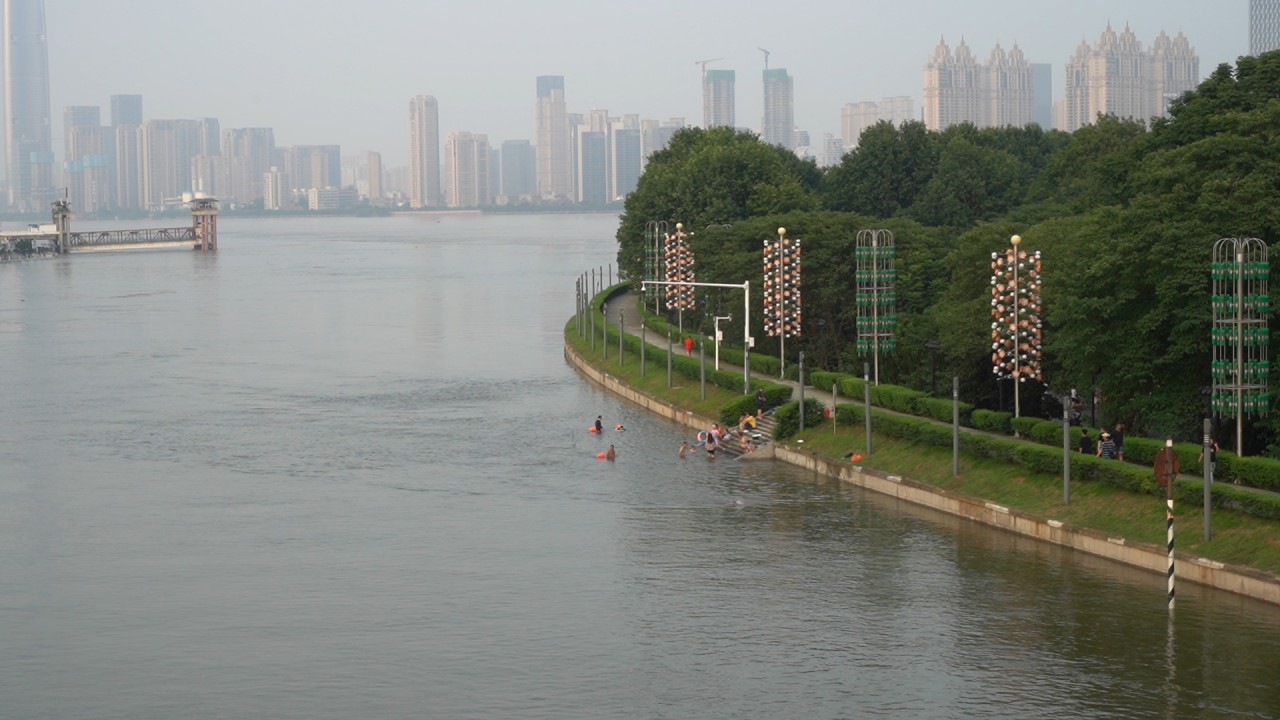
China’s post-coronavirus construction boom shows signs of cooling as steel output slows
- Bad weather and government curbs on property financing are slowing construction projects, reducing demand for steel and iron ore
- Analysts say slowdown does not mean steel production will grind to a halt, with demand and output expected to pick up in the New Year
A surge in Chinese steel production to meet a post-coronavirus infrastructure building boom may have run its course for this year, as steel and iron ore inventories pile up and demand for steel declines.
The fall in iron ore prices over the past week from a six-year high of nearly US$130 per dry metric tonne in late August signals a slowdown in steel demand, according to analysts. The price of iron ore shipped by sea had fallen to about US$117 per tonne on Wednesday, according to S&P Global Platts.
Iron ore prices are a key gauge of the economic health in China and around the world, with high, rising prices indicating strong construction activity. In 2015, iron ore prices tumbled below US$40 per tonne when construction in China fell sharply as economic growth slowed.
We think steel output peaked for this year in August and will be softer over the remainder of this year
Project delays caused by heavy rain and flooding, upcoming holidays and the onset of winter, combined with a sharp drop in profit margins at steel mills due to expensive iron ore are also contributing to weak demand and production, analysts said.
“Steel production has started to ease in September, which wasn’t really a surprise as lending to the property and infrastructure sectors has been tightened,” said Paul Bartholomew, S&P Global Platts head of market insight for metals in the Asia-Pacific.
“We think steel output peaked for this year in August and will be softer over the remainder of this year.”

03:05
Massive floods hit communities along China’s Yangtze River, where more rain is in the forecast
The slowdown does not mean steel production will grind to a halt, Bartholomew said, adding demand and output will pick up in the new year, albeit at a slower pace.
Atilla Widnell, managing director at Navigate Commodities, said it takes six to nine months for the government’s infrastructure stimulus to work its way into the economy, with ebbs and flows in steel production along the way.
“It’s an inflated market that’s finally letting out some steam and now the downside is going to be exacerbated by large supply volumes from Australia and Brazil,” said Widnell, on the outlook for iron ore. “We haven’t even begun to see the full extent of stimulus-driven steel consumption yet.”
Loose credit conditions helped boost the steel market after lockdowns, but money has tightened recently, slowing new construction, Bartholomew said.
Portside iron ore inventories will build up over the next few weeks as large Australian and Brazilian shipments land in China while domestic consumption rates are unable to keep pace
“It could be argued that prices and sentiment overheated somewhat on expectations of more stimulus for infrastructure in particular,” he said.
A slowdown in credit for real estate projects coincides with the government’s plan to cool speculative activity and property prices by curbing developers’ ability to take on new debt, Betty Wang, senior China economist at ANZ Research, said in a note.
The new measures include capping ratios of debt to cash flows, assets and capital levels. Previously the government had only focused on regulating financial institutions or property prices, Wang said.

01:57
Construction begins for major sea crossing to link Shenzhen and Zhongshan in Greater Bay Area
In addition, steel mills typically start to slow production in September and October when long holidays occur and ahead of slowing steel consumption in winter, said Liu Xinwei, chief researcher from Sublime China Information.
Stainless steel inventories at commercial warehouses in Wuxi and Foshan, China’s two core stainless trading hubs, rose for the second consecutive week after “persistent weakness of demand from end-users”, metals analysts Mysteel Global said in an update published on Tuesday.
As steel production slows, iron ore miners now see large shipments parked at Chinese ports, Widnell said.
“Portside iron ore inventories will build up over the next few weeks as large Australian and Brazilian shipments land in China while domestic consumption rates are unable to keep pace,” he said.
“We fully expect end-users to work their way through relatively high steel inventories … Australian and Brazilian export volumes will react to reduced Chinese consumption during this period, but it will likely be a measured response given that [Brazilian iron ore miner] Vale is recovering lost production.”
Analysts expect slower steel production in the fourth quarter to push iron ore prices down to about US$90 to US$110 per dry metric tonne by the end of the year.

